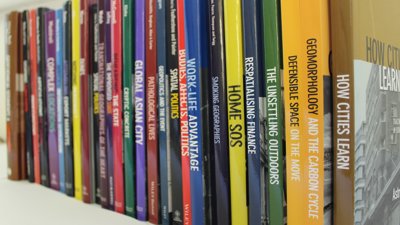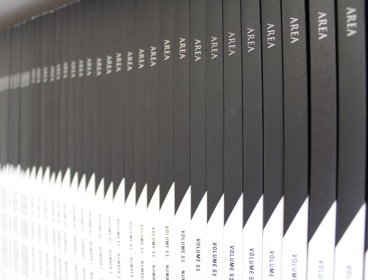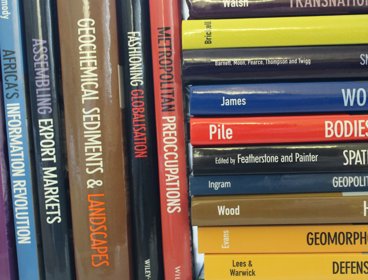By Louise J Bracken, Northumbria University and Alastair Bonnett, Newcastle University
Publishing in journals has several advantages. Because of the refereeing process journal articles are considered to have been vetted for quality; journal articles are more readily turned up by search engines such as Google Scholar giving them greater visibility over book chapters and books; articles tend to be easily accessible as online versions and publication ahead of print; and they are easier to digest (and to write) because they are shorter than monographs. The advice given in this section is based on our experiences as editors, authors and referees.
Choosing a journal
It is important to submit your article to an appropriate journal. This decision is based on a range of factors including (in no particular order): the prestige of the journal (often measured by the Impact Factor - see Journal Impact Factors and bibliometrics); the subject(s) covered in the journal; the type and length of article published in the journal; readership of the journal (or who you wish to engage with); the turnaround time between submission and publication; your preference on whether to publish in a subscription or open access journal; and stipulations that may be mandated by funders (see Open access and repositories).
Some journals are very specialist and others more general in remit. An article in a general geography journal will need to engage with broader debates in the discipline and include more background information compared to an article published in a more specialist journal. Articles published in discipline or even sub-disciplinary journals often focus on a more narrow set of debates and take more background information for granted. Publishing in a general subject journal can raise your profile and demonstrate your ability to engage with wide ranging debates. However, articles in more specialist journals may be more helpful in establishing your expertise and research credentials.
When dealing with more specialist journals it is important to check that your material maps on to the advertised remit of the journal. If your piece does not fit, save yourself time and energy and submit somewhere else. If you are unsure, most editors are happy to advise about suitability on receipt of an abstract. If you are not in a rush to have an article accepted you might try submitting to a more prestigious and selective journal.
If the article is rejected it can then be submitted elsewhere – although you must ensure that you do not submit the same article to two journals simultaneously (see Research and publication ethics). However, if you would like your work published as soon as possible, it is safer to submit to a journal you think is likely to accept it. Turnaround times from submission to publication can vary dramatically. Turnaround information is usually available on the journal website or from the editors (but remember that this information does not guarantee your article will be dealt with within the average specified period).
Writing the article
A journal article needs to be a discrete entity, capable of standing alone. This is especially important when writing up pieces from a thesis or a large research project.
Most articles follow a clear structure which sets out a well defined contribution to a body of literature such as an ongoing debate or methodological development. Published articles need to demonstrate that they are making a substantive and original intervention or argument: mere summaries of previous work, no matter how well written, are usually of little interest to editors (see review essays).
The literature and/or debate you choose to engage with should be relevant to the journal to which you are submitting. The article should then discuss its approach/ methods and data sources. The way in which this is done depends on the type of research and data involved, but it is important to link your methodology to the results and discussion that follow. Geography is a very broad discipline: in some sub-fields, results and interpretations should be clearly separated (this is often the case in physical geography); whilst in others (notably some of the more cultural areas of human geography) a more essay-based style is favoured. Remember that referees/readers need to understand the approach/methods used to be able to assess the quality of the overall contribution made by the article. In the conclusions, the significance and implications of findings should be discussed, rather than simply repeating and summarising outcomes. It is always a good idea to study previously published articles in the journal to find out whether there is a preferred structure around which to base your own article. Always keep articles within the specified word limit of the journal.
Many essay prizes or other awards linked to a particular society or journal are specifically aimed at early career researchers (including the Area Prize for New Research in Geography). In addition to any useful cash or free books that may be on offer, these prizes may have the big incentive that the winners are likely to be published in or promoted by the journal, and the recognition gained is very helpful for career development.
Giving a paper at a conference is a useful way to gain feedback from your peers before submitting it to a journal. Listen to their comments and make your work part of wider debates. The skills of précis and concise argument that are needed to present a conference paper are not that far removed from those needed to prepare a good journal article. Receiving immediate comments from some of the target audience for your eventual article is equally valuable.
Remember that if you do not have enough material for a full article then you may wish to consider writing a short comment or observation piece. A number of journals publish these, for example, Commentaries in Area (about 1,500 words) and The Geographical Journal (2,000-4,000 words). They tend to be more lightly refereed but can be useful in starting a debate and raising your profile as an author.
Abstract and keywords
All articles will need an abstract, which should succinctly establish the issue, approach, key findings and important implications of the research (see Help readers find your publications for more on optimising abstracts for search engines). Some journals now also ask for short bullet points of key highlights. It can be difficult to write a good abstract, but it is important to spend time and effort on doing so since this is the section of your article that will be most widely read, and will inspire people to read the complete article. In the short term, a clearly written abstract will help your paper through the peer-review process, as reviewers often only receive the title and abstract before they agree to review.
Many journals now also require you to write a short abstract and provide an image that can be used as a ‘graphical abstract’ on a journal’s homepage. Research shows that providing a graphical abstract can increase engagement with the article, so consider what images or figures you could use when preparing your paper.
Keywords enable people to find your article when using search engines. It is very important to think carefully about these and to follow author guidelines about the type and number of keywords to include. You want keywords to reflect the main topics covered in the article, but also to map on to any key trends and widely used terms in research to enable your article to be found by as many people as possible. These details are becoming ever more important with the online dissemination of increasingly abundant journal content. Abstracts and keywords, along with your name and article title, are often the only data that are supplied to the abstracting and indexing databases, and to the inter-linked citation systems, such as Cross Ref, with which most journal publishers collaborate.
Following author guidelines
It is really important to follow the published guidelines for authors. These are usually provided on the journal websites. These details will inform you of topics covered by the journal, any guidance on word lengths, the journal’s house style and formats (e.g. for headings and references), and how to submit your article. It is important to adhere to the published guidelines since manuscripts can be rejected on first screening if they are too long or do not follow the house style. In some journals, figures and tables are counted as a certain number of words (e.g. 250 words per figure in the Society's journals), so be aware of exactly what counts in the word limit.
Author guidelines also specify details of how figures should be drawn. This includes the resolution of photos, size of artwork and acceptable software packages. It is important to follow these since most submissions are now electronic and the software only allows ‘correct’ versions to be uploaded. It will also save a lot of time in the production of your final article following acceptance. Also note that the author is responsible for securing permission to reproduce copyright images both in print and online, and for paying any necessary fees for permissions (see Preparing an article for publication).
Submitting the article
Most journals now use electronic/online submission systems and it is advisable to make yourself familiar with this software once you have decided on the journal to which you want to submit (again see the journal website for this information). This will let you establish the suitable file formats and other information that needs to be submitted alongside the text and diagrams (e.g. copyright agreements and permission requests for using previously published figures). It can be frustrating if you are not aware of these when you try to submit your article, but cannot proceed until you have the extra information in place.
Most journals also allow you to include a covering letter on first submission. The initial covering letter only needs to be brief, stating why you have submitted that article to that particular journal and possibly suggesting some suitable referees (although you may also have to enter these again during electronic submission).
The refereeing process
There are four stages in the decision-making process: pre-screening, refereeing, editorial decision-making and, after any necessary revisions, final acceptance or rejection of the article. Pre-screening is conducted by editors and involves assessing whether the article’s substance, approach, length, quality and style are suitable for the journal. This is done to make the refereeing process more efficient and to avoid trying the patience of referees. You are unlikely to receive extensive comments if your article is rejected at this stage.
If your article passes pre-screening it will then be refereed. Referees are selected by the editors and, for some journals, can be guided by suggestions from authors. It is common for editors to seek three referee reports, although editors’ decisions may be based on fewer, or sometimes more. Referees advise the editors about the quality of the article and whether it should be accepted or not. It is their job to be critical and this can be tough on authors, especially if you feel they have missed the point. However, comments from the more conscientious and constructive referees can really help improve and refine arguments and presentation of data and ideas, making the finished article much stronger.
Referees often have distinct perspectives and it is normal to receive different comments and recommendations. The refereeing process is time-consuming and there are generally no inducements to do it apart from a sense of professional responsibility (although several publishers offer discounts on books to referees). This is the stage that is likely to hold up publication of an article. It can take time for editors to find willing referees, it then takes time for referees to read the article and write a report, and there are often frequent reminders from journal managers to referees encouraging them to submit their reports (for more information on acting as a referee, see Peer reviewing).
There are usually four principal recommendations open to referees: i) accept as stands; (ii) minor revisions; (iii) major revisions; or (iv) reject. Once the editor feels that they have received sufficient feedback they will make a decision on your article and communicate it to you. You will be sent the decision, an explanation of the decision and, if relevant, a list of suggested changes. Where referee reports vary the editor will usually give you clear guidance about how to respond to the recommendations.
Revised manuscripts when resubmitted may be sent back to one or more of the original referees for further review and recommendations. There is no guarantee that a revised article will be accepted for publication. Sometimes editors ask authors to complete a further round of revisions before coming to a final decision about whether to accept an article or not.
Some journals may refer your paper on to another recommended journal post-rejection. You as the author have the choice whether to accept the referral or not. The recommended journal would then treat your paper as a new submission, although they may use any peer reviews from the original journal in their decision-making.
Revising an article and responding to reviewers’ comments
If you are asked to revise an article you should consider all of the comments made by the editor and referees seriously. Difficulties arise when you feel that the referee has misunderstood something in your article or even missed the point completely and hence you disagree with some of the suggestions for revision. Often when this situation occurs it shows that you have not been clear enough in your explanations and some revision is necessary, even if it is not along the lines suggested by the referee. At this stage, you may find it helpful to seek the advice of a peer, colleague or supervisor. It’s a good idea to try to incorporate, or at least address, all of the revisions suggested.
However, if you disagree then you can make a case for not accepting a referee’s suggestion to the editor. Always remember that your article can be rejected at this point if the editor is not happy with the revisions undertaken. When resubmitting your revised article, you should – and will most likely be prompted to – include a letter which describes the changes you have made in response to the referees’/editor’s comments. Referees are usually able to read your response letter if the editor decides to ask them to review the revised article, so the letter should be specific and carefully written. Some journals set out explicit instructions in their decision letters for how a response letter should be constructed and practices do vary.
For example, you might be asked to respond to reviewer comments in a point-by-point fashion, indicating page numbers in the manuscript where you have addressed each comment. Or you might be asked to submit a table which outlines the changes you have made. Some journals require that you submit two copies of your revised paper: a copy where changes are highlighted in a different colour and a 'clean' copy where changes are not marked. If you have chosen not to take on board particular comments, this is the place to say what you have not done and why. It is important to be clear and concise so that the editor (who is not necessarily an expert in your area of research) can assess the implications for the overall quality of the article.
Final acceptance of an article only occurs once the editor (often after seeking further advice from one or more of the original referees) decides that the revisions have been satisfactorily completed. You will then receive an acknowledgement from the journal and the article will move into the production stage.
Production
Once the article has been accepted it will pass on to production. This tends to be managed by the publisher rather than editors and any contact about your article is likely to come from them (see Supporting research articles: a publisher’s perspective). There may be requests from the publisher about figures, particularly the format and resolution, but more often than not there is no contact until you receive the proofs of your article. Proofs are the final version of your article, as it will be published online and/or in the hardcopy of the journal. You will be asked to check the proofs and answer a list of queries raised by the production editor. The proofs should be checked and queries answered as soon as possible. No publisher likes extensive changes at this point and these should be avoided if possible. Beware that some journals charge you for any major changes, for instance if alterations are more than correcting the odd date, word or reference. Sometime after proofs have been returned, you will receive a PDF of your article and, if applicable, your article will be published online ahead of print.
Dealing with rejection and major revisions
The key to successful publishing in journals is dealing constructively with rejection. Nearly all academics have had articles rejected (often very many articles). If your article is rejected, do not argue with the editor’s decision. Editors are not open to letters of appeal. Their decisions are final. You are entitled to an explanation but pestering editors is a waste of time. It is important to move on. Try to understand why the article was rejected and explore whether it is worth submitting the article to a different journal. In many cases, a rejected article can be used as the building-block for a much better one. Do not let a rejection prevent you submitting to the same journal again in the future: decisions are made on articles, not authors.
Major revisions can also be challenging to handle, especially if you do not agree with the reviewers. As with a rejection, take some time to process the decision, and see this as an opportunity to improve your paper. You can always ask the editors for clarification on what you need to address if anything is unclear.
Publishing ethics
A few golden rules to remember:
-
It is not acceptable to submit the same article to more than one journal at a time. If you are caught (and there is a good chance this will happen through the refereeing process) the article is unlikely to be published and you will gain a bad reputation as an author.
-
It is unethical to publish the same article in more than one place (academic journals always stipulate that they only publish previously unpublished work). It is acceptable to submit more than one article on the same research, but each should have a distinctive take on the material and make a unique contribution.
-
Be careful of publishing too many similar articles. This can harm your reputation and lead to people not wanting to read your work because it is too repetitive (this is sometimes called ‘salami slicing’). This can be a problem when you are trying to establish a reputation as an excellent and innovative scholar.
-
All those who contributed to the writing of the article should be named in the list of authors. It is conventional to list authors alphabetically if they all contributed equally to the article or, where this is not the case, to place the lead author first. Other acknowledgements, to funding bodies or reviewers/editors who made particularly helpful comments, should be included at the end of the article. Failure to do this may not only harm your reputation with others but also compromise your ability to secure future grants for example.
About this guide
Publishing is a crucial, but sometimes daunting and unexplained, part of academic life. All academic geographers are supposed to do it, but there are few formal guidelines about how best it should be done. Many of us discover how to publish by trial and error or through the mentoring and support of colleagues. Publishing and academic landscapes also change, presenting new challenges to established academics. The publishing and getting read guides have four main aims: to provide clear, practical and constructive advice about how to publish research in a wide range of forms; to encourage you to think strategically about your publication profile and plans; to set out some of the opportunities and responsibilities you have as an author; and to support you in getting your published research read.



